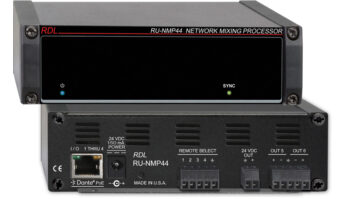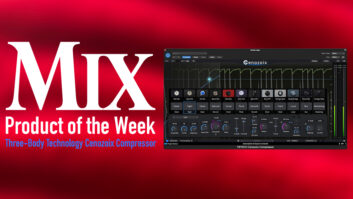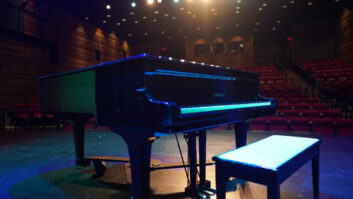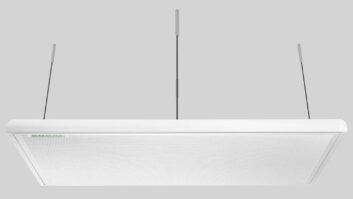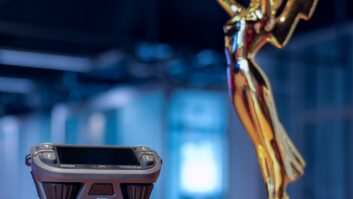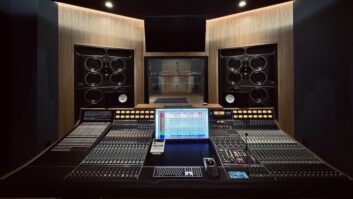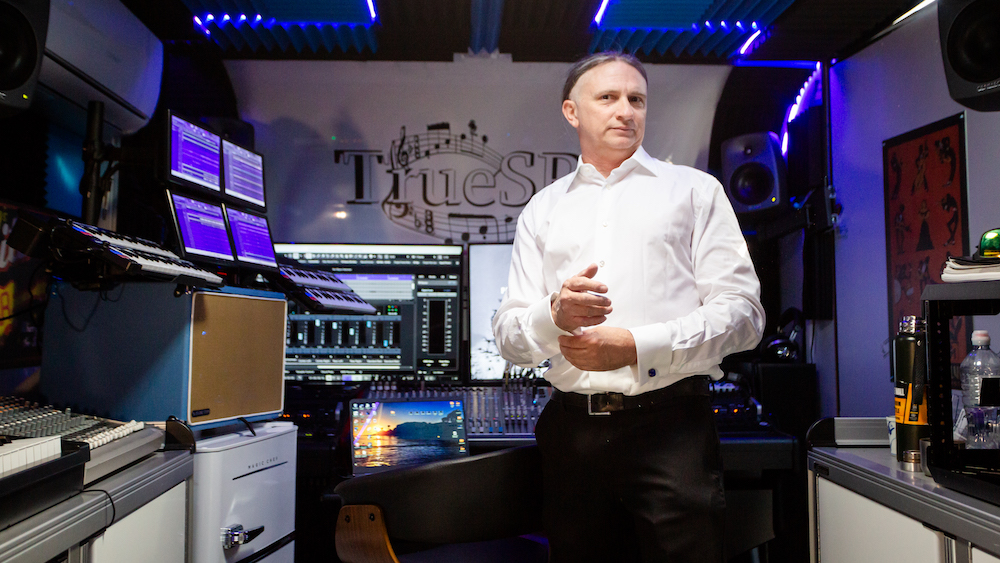
San Diego, CA (April 19, 2024)—The history of surround sound dates back nearly to the advent of stereo, with a screening of Fantasia back in 1941. In the 1960s, quadraphonic sound was introduced, with a notable 1967 Pink Floyd concert garnering plenty of attention. Variations on quad continued up through 1976, when Dolby introduced its Lt-Rt technology for film re-recording and playback. That was followed by 5.1, 7.1, on up to today’s immersive audio formats, including Dolby Atmos and Sony 360RA.
The history of professional audio, meanwhile, has forever been populated by technologists, musicians and enthusiasts who come to the industry from the outside looking in, combining technologies and developing products with tubes, transistors and now code-writing, sometimes in labs, sometimes in garages, most often in their spare time. The guitar-playing scientist has become something of a symbol of independence within the industry at large, with left-brain and right-brain working in tandem.
Michael Way was a certified electrician living near San Diego, with a concentration on high-end commercial and residential properties (and a penchant for developing home theaters), when he decided to enter the audio industry in 2013 with the formation of Sound Pressure Labs in Northern California. His goal: to develop a surround sound solution for live performance that was focused on the musician and the stage.
“I was at a Beck concert in 1998 or ’99 at San Diego Street Scene, and he came out at the end of the show with about 10 handheld synthesizers,” Way recalls. “Everybody in the band came up and played their part, standing shoulder-to-shoulder across the front of the stage with a little box that resembled a laptop, and they were just tapping squares and turning knobs. It was a true inspiration. Wow!
“At the end of the show, my friend asked me, ‘How would you make this better? What would you do to make it more intense?’” he continues. “I thought for a minute or two, and I said I would do this in something like spherical surround. Twenty years later, I called him up after I finished with Transmigration and we were up for a Grammy consideration in Best Immersive Audio Album, and I said, ‘Well, I think I achieved it.’ He said, ‘Well, that took long enough. Now what are you going to do?’”
Way was born in Arcadia, Calif., with parents who were music fans and a grandfather who worked in the region’s aerospace industry. By five years old, he was dabbling in electronics, and he has achieved great success in the field, but by the time he attended Grossmont College, he had also become something of a multi-instrumentalist, starting on guitar and piano, then moving into second chair, first violin in the college orchestra.
“The violin is at the center of the orchestra, so you’re sitting right in the middle and you have this surround perspective of 100 instruments around you,” he notes. “For two years, I heard that sound subconsciously and put myself in a place that very few people get to sit. I would say that my brain needed to develop in that space. To this day, my reference hall is Copley Symphony Hall in San Diego; that’s where I go to reassess my sound reference. If I ever get a creative block, I’ll go to the symphony and re-create the foundations again.”
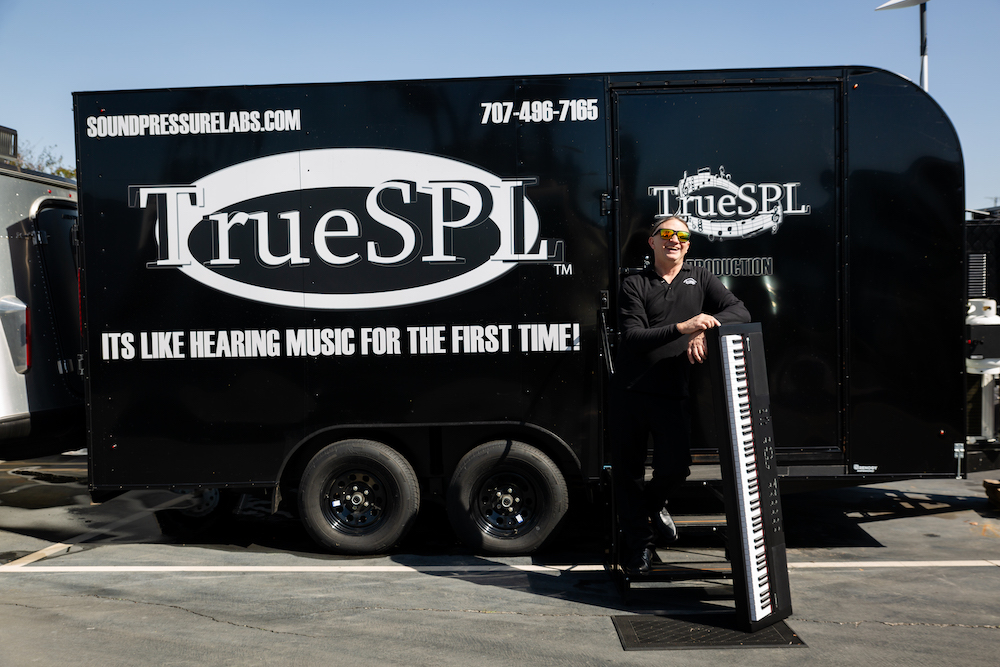
That experience onstage, from his time in the orchestra through his revelation at the Beck concert, led to the formation of Sound Pressure Labs in 2013, following a decade-plus of tinkering with electronics and code and figuring out timing, phase and latency issues. By 2019, he had a working product based around a series of four quad-core, 4.7GHz processors working in tandem, with a proprietary multichannel sequencer—the SPL MCS—at its heart.
“The first time I built this system, we were having huge latency issues and timecode problems,” Way explains. “It ended up that our processors had to be phase-aligned; they had to be exact mirror images of each other, and they couldn’t have any other protocols running in the background. That was the key to building these tandem arrays so that you can have discrete audio distribution from phase-aligning machines. That’s what gives you the individual, discrete control of every speaker in the room. Then you can add the next level, which is the discrete sequencing, where basically you have a sequencer for every channel that you hook up. Then the SPL Emulation is the saturation on top of everything that allows all the movement. If front-of-house had the only control, I didn’t think that was fair to the live performer; I wanted the performer to have some control of the live performance. Instead of mixing one channel, you’re mixing six channels per performer.”
SPL Launches TrueSPL Real-Time Surround Sound Beta Test
To be clear, TrueSPL is not a format. It is a 6.1-channel configuration, with three sets of stereo playback—front, sides and rear—and it is essentially agnostic. It is based around .WAV files and MIDI communication protocols, and tracks can be exported however the client wishes. While Way uses Cubase 12 for ultimate rendering to Dolby Atmos, a system setup can make use of any DAW. At NAMM 2024, Way entered talks with Bitwig to help further develop and integrate his software.
TrueSPL technology is proven and has been put to use in a variety of applications, primarily in live sound and theater. A six-week run of music performances at the Garberville Theater in Northern California proved the concept, as have a series of one-off live events at county fairs, live broadcasts, off-the-grid festivals and specialty presentations. The TrueSPL mobile production facility, with two TrueSPL multichannel sequencers, a TrueSPL Emulator, and 6.1 Genelec 8040 Smart Active Monitor system, hit the road in 2022.
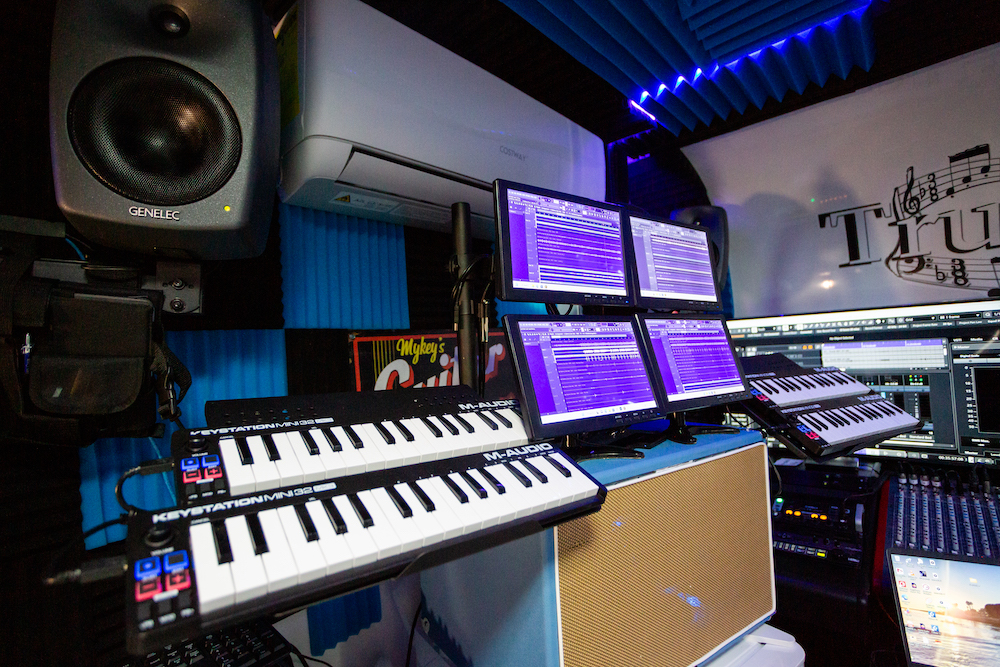
To date, TrueSPL has been used primarily in live sound situations, though it is one of those technologies that continues to find new outlets, in everything from remote location work for film and television to sound design for videogames. Through an association developed with award-winning composer Jim Gardiner and Paula Telander at Pajama Studios in Oakland, Calif., it has also become a writing tool, allowing Gardiner to conceive of and perform his musical ideas in real-time to picture, in a 360-degree field. He has become a big fan, and through Pajama, his team serves as a mixing and mastering facility for TrueSPL projects, with playback through a 6.1 Yamaha/NHT monitoring system in Studio A.
The technology will continue to advance, and the learning curve for mixers and artists will continue to go down. Already, Way has a prototype for automatically tracking performers as they move onstage, distributing the changes to the speakers in real-time. And he is constantly exploring new methods for controlling sound capture and distribution. But he has no intention of leaving his core idea behind, which is to give control to the artists.
“I’ve actually moved my own front-of-house to the stage when I perform,” he says, “so all of that gear goes on stage, and I control the whole spherical arena from there. Everything that I imagine when I’m onstage, I hear in surround. I’d like to make that available to everyone.”
